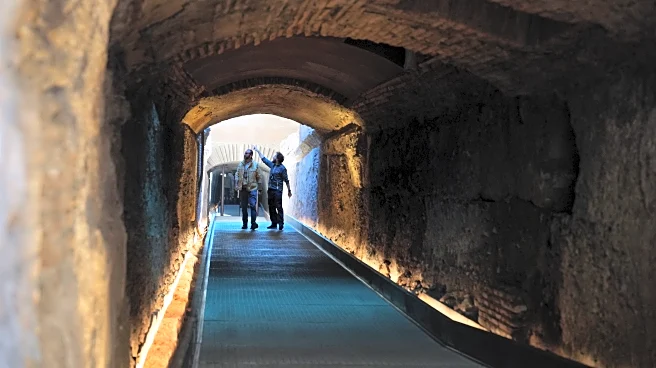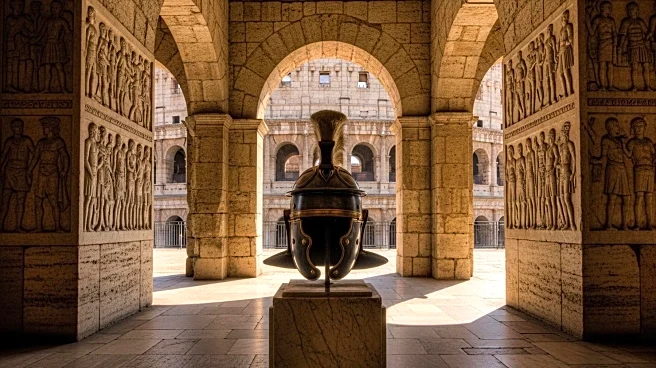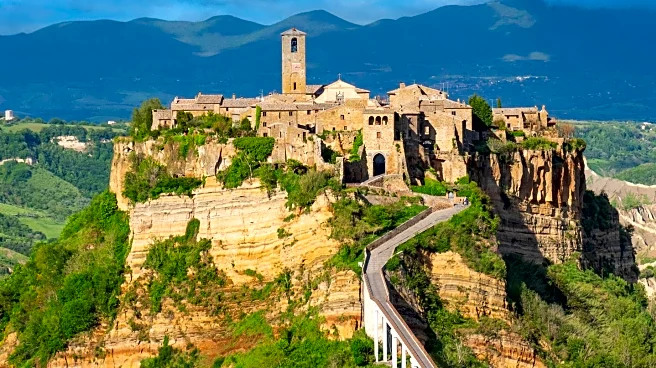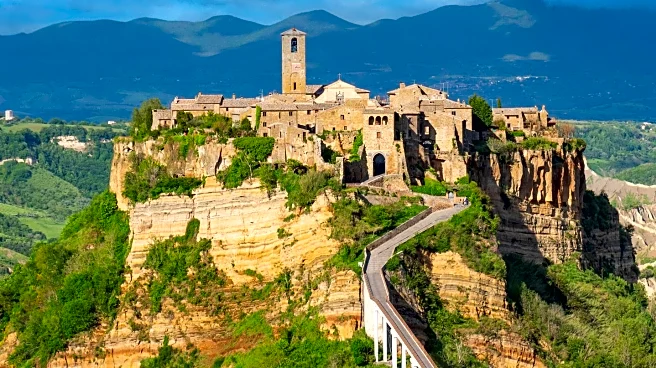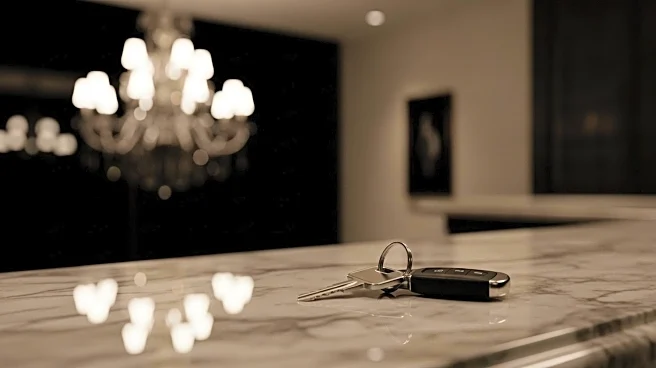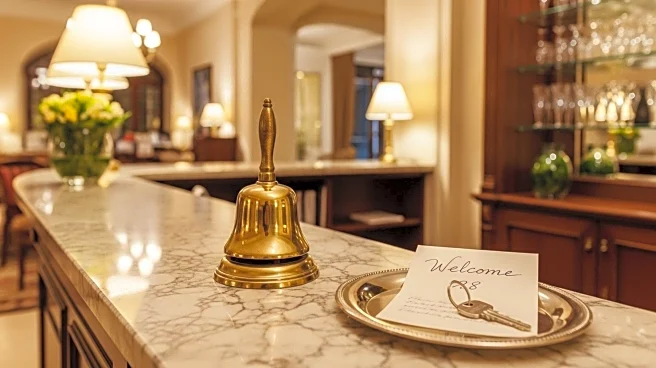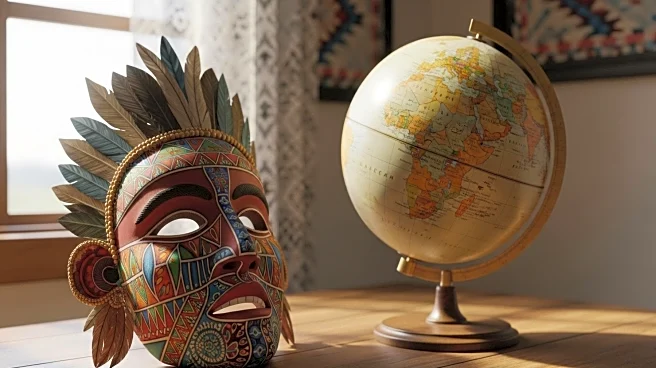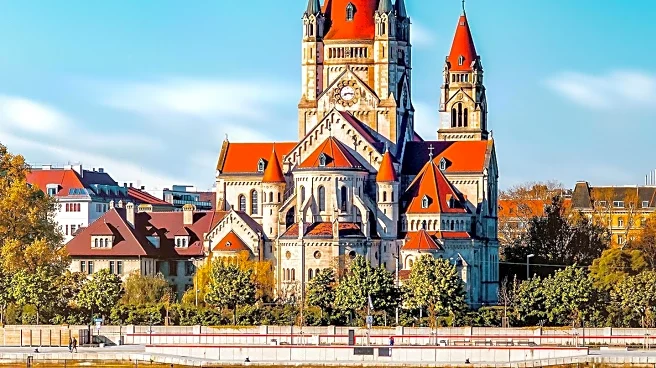What's Happening?
The Colosseum in Rome has opened a previously secret passageway known as the Commodus Passage, named after the 2nd-century Emperor Commodus. This passageway, rediscovered in the 1810s, was used by emperors to enter the arena discreetly. The passageway, which will be accessible to the public starting October 27, was part of a renovation project completed between October 2024 and September 2025. The renovation included structural conservation, restoration of decorative elements, and installation of a walkway for visitors. The passageway originally featured marble cladding and painted scenes depicting boar hunts and acrobatic performances. Due to damp conditions, the decorations have deteriorated, prompting researchers to create a virtual reconstruction. The Colosseum Archaeological Park plans to continue exploring the passageway in 2026.
Why It's Important?
The opening of the Commodus Passageway is significant as it provides a unique glimpse into the architectural and cultural history of the Roman Empire. It allows visitors to experience a part of the Colosseum that was exclusively used by emperors, offering insights into the social hierarchy and ceremonial practices of ancient Rome. This development enhances the historical value of the Colosseum, potentially increasing tourism and educational opportunities. The virtual reconstruction of the passageway's decorations also highlights the role of technology in preserving and interpreting historical artifacts, which can influence future conservation efforts.
What's Next?
The Colosseum Archaeological Park plans to further explore the passageway in 2026, which may uncover additional historical details about its use and significance. This continued exploration could lead to new discoveries that enrich our understanding of Roman history. Additionally, the opening of the passageway is likely to attract more visitors, prompting potential upgrades to visitor facilities and educational programs at the Colosseum.
Beyond the Headlines
The opening of the Commodus Passageway raises questions about the ethical considerations of preserving historical sites while making them accessible to the public. Balancing conservation with tourism can be challenging, as increased foot traffic may pose risks to the site's integrity. The use of virtual reconstructions also highlights the evolving role of digital technology in historical preservation, offering new ways to engage with and interpret ancient artifacts.

